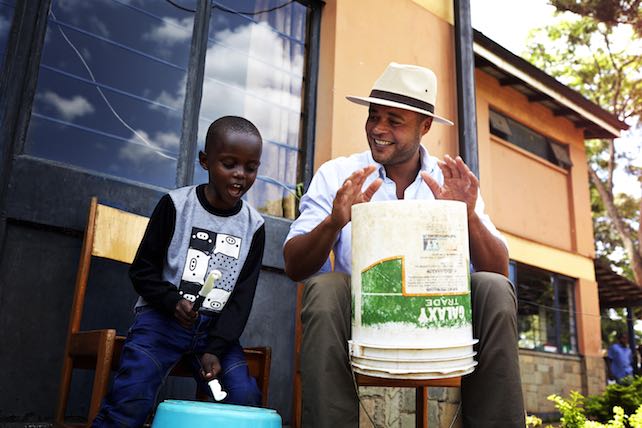Kenya
Kenya is located in East Africa and gained its independence from Britain in 1963. For decades Kenya has been struggling with political unrest and lack of democracy, and in 2008 violent riots in the wake of a controversial election cost more than 1,000 people their lives, and up to half a million people had to flee.
Although Kenya has had East Africa’s largest economy for many years, the country is struggling with corruption, a chronic trade deficit, inflation and youth unemployment of over 17 percent. The country has one of the world’s highest HIV and AIDS rates.
Children in Kenya
Children in Kenya often live in poverty, although more children go to school and the number of children who die before the age of five has fallen.
Several factors have contributed to undermining Kenya’s efforts to improve children’s conditions, including drought, the global crisis, rapid urbanization, crime, HIV and AIDS, malaria and tuberculosis, and a lack of social safety nets.
Fear of terrorist attacks has hit tourism revenues hard, and at the same time Kenya is investing too little in health and education.
A quarter of all children are married before the age of 18, and just as many are working at an early age. Many are forced into dangerous work.
This means that Kenya must make an effort to live up to World Goal 8, which must promote decent jobs for all, and that all countries must stop the worst forms of child labor. At the same time, from 2025, all countries must completely put an end to all forms of child labor.
The children in the SOS schools are generally doing well. In Eldoret, children who do less well receive extra tuition during the holidays. In Nairobi, the children in the kindergarten are divided into groups according to age and competencies, so that they can learn as much as possible at the pace that suits the individual child. Many children also participate in sports, play music or dance, especially the Children of Buru Buru, where our co-founders Mathilde Gøhler and Remee S. Jackman, among many other things, upgraded the village community with a brand new music and dance studio.
Watch the video below where Remee S. Jackman and Mathilde Gøhler, are on their first visit to the SOS village community in Buru Buru, Nairobi. A village in which their sponsor child since 2014, 13-year-old Rei, lives. The village community therefore has a very special place in Mathilde and Remee’s hearts, and they keep returning to it to continue supporting, where they can and create awareness of the good cause.

Facts about children
- 42 percent of Kenya’s population is under 14 years of age.
- There are 2 million orphans.
- 650,000 children have lost one or both parents to AIDS.
- 49 children out of 1,000 die before they turn 5 years old.
- About 79 percent of all children complete schooling. 59 percent complete the intermediate stage and the schooling.
- Just over 16 per cent of the children are malnourished, and 35 per cent of the children do not develop as they should, due to malnutrition.
- Almost half of all children under the age of five are not treated for dehydration if they have diarrhea.
Country facts
- Kenya is more than 13 times the size of Denmark.
- There are over 46 million people living in Kenya.
- A Kenyan earns an average of 1,240 euro a year or 3,5 euro a day.
- 5.3 percent of all Kenyans between the ages of 15 and 49 live with HIV or AIDS.
- For every 100,000 children born, 510 Kenyan women die from complications.
- The birth rate in Kenya is 35 births per 1,000 Kenyans. In Denmark, the birth rate is just over 10.
- A Kenyan woman can expect to live for 63 years and a man for 60 years.
- Just over one in three Kenyans live below the $ 1.90 poverty line per day.
Village communities in Kenya
Support MY FOUNDATION's work in Kenya, or become a partner in a project or a village community in the country.